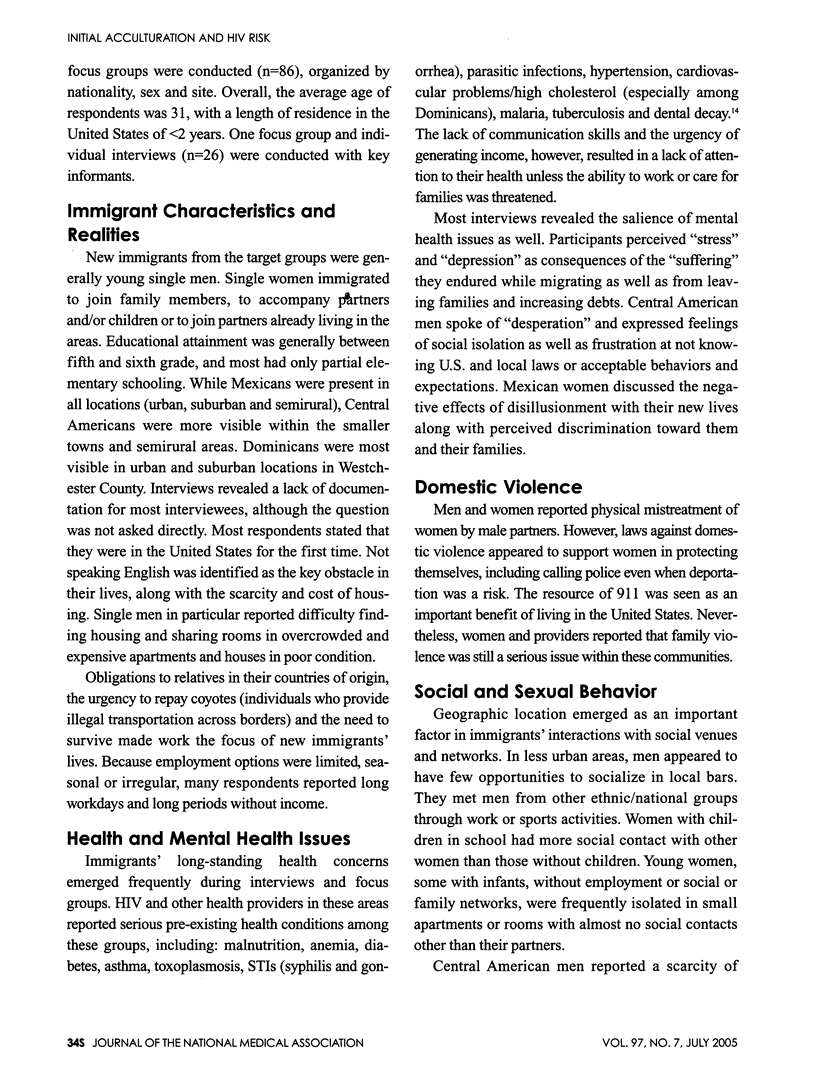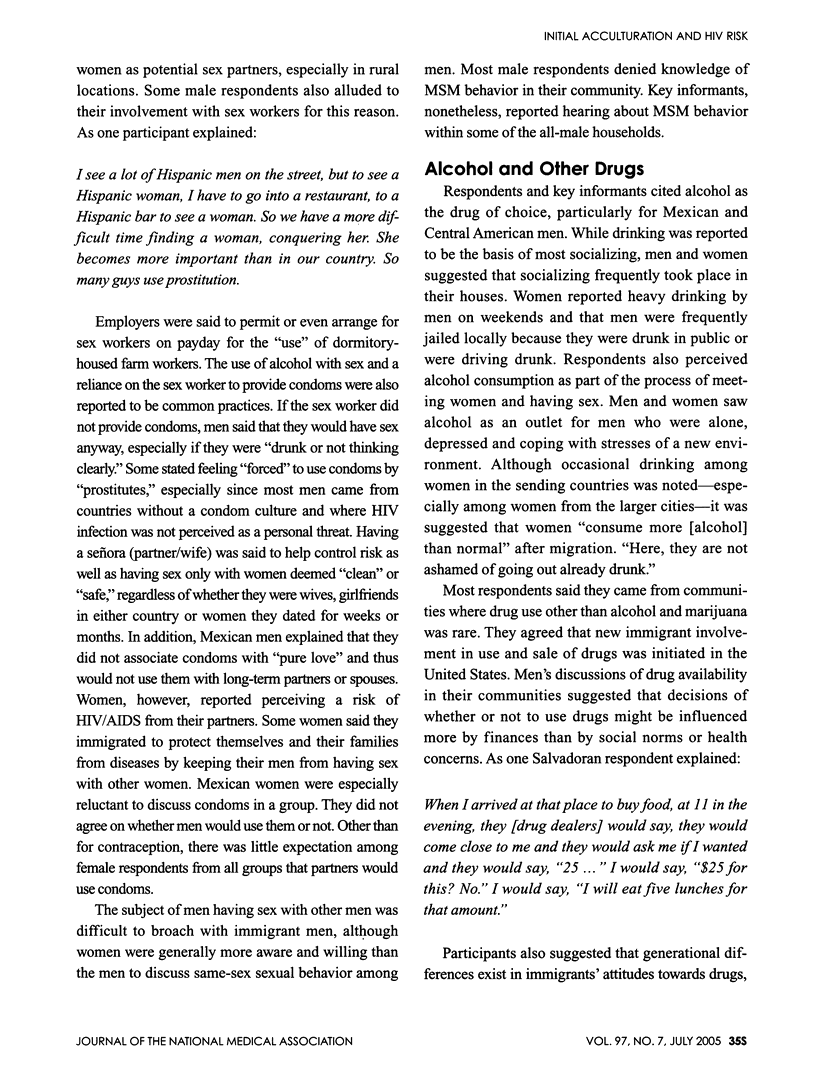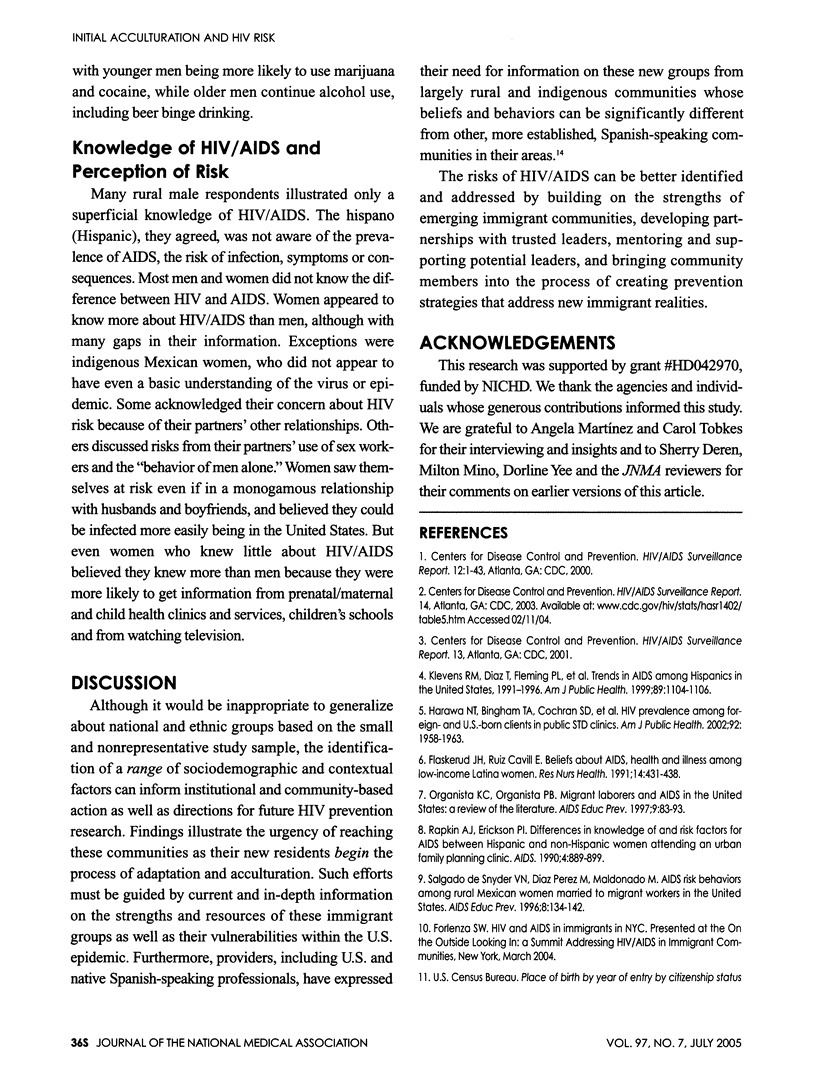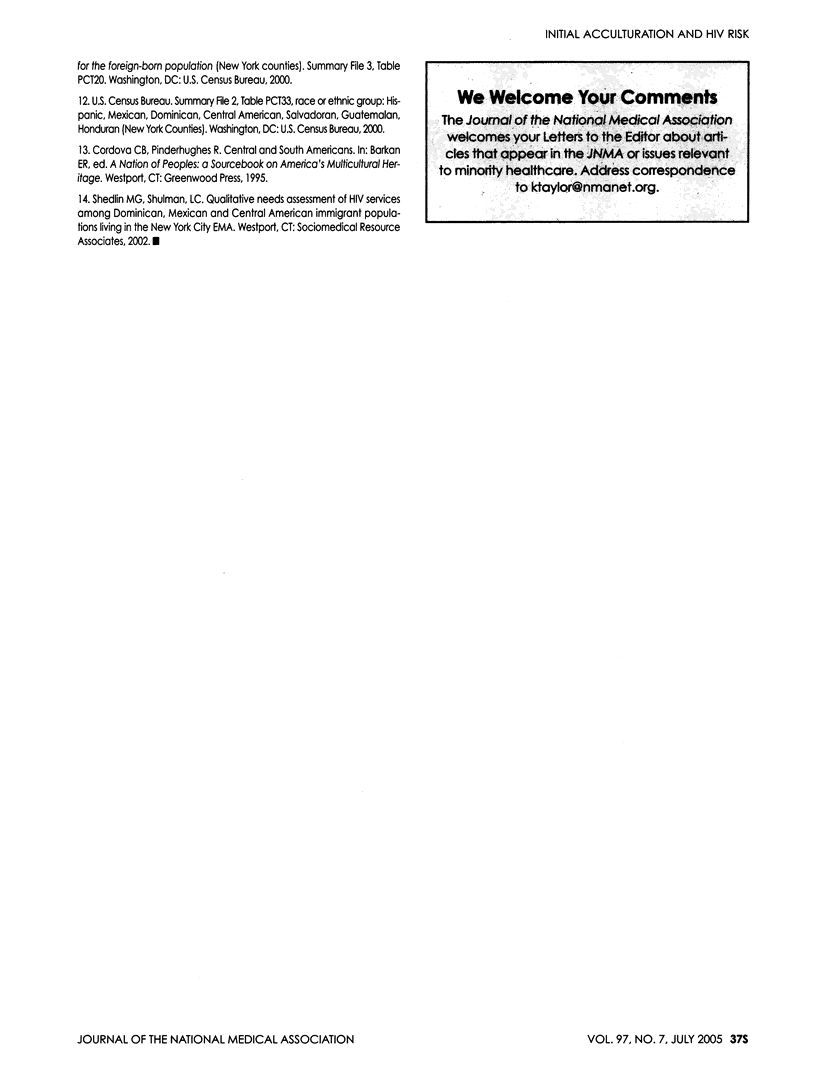Abstract
PURPOSE: Research on the initial stage of acculturation of new immigrants is crucial for identifying AIDS prevention policies and priorities for this vulnerable population. METHODS: This study employed an exploratory approach and qualitative data collection methods to identify and describe social and behavioral factors influencing risk for HIV infection among recent Hispanic immigrants (<3 years in the United States). Immigrants from Guatemala, El Salvador, Honduras, the Dominican Republic and Mexico were interviewed in urban, suburban and semirural settings in the New York Metropolitan Area. Data were collected through ethnographic fieldwork, in-depth interviews (N=51), focus groups (N=11; total number of participants=86) and individual interviews with health and social service providers (N=26). RESULTS: Initial stages of acculturation for immigrants reflect both retention and change in attitudes and behaviors involving their mental health, gender role norms, social and sexual behavior, and alcohol and other drug use. Current living environments may introduce conditions affecting HIV risk and prevention, while sustained connections to countries of origin may support retention of attitudes and behaviors with positive and negative risk implications. CONCLUSIONS: Specific epidemiological, environmental, economic, social and psychosocial factors are identified that provide the context for risk and prevention. The challenges and opportunities faced by these new communities must be distinguished from those of more acculturated immigrant populations if culturally appropriate interventions are to be developed.
Full text
PDF





Selected References
These references are in PubMed. This may not be the complete list of references from this article.
- Flaskerud J. H., Calvillo E. R. Beliefs about AIDS, health, and illness among low-income Latina women. Res Nurs Health. 1991 Dec;14(6):431–438. doi: 10.1002/nur.4770140607. [DOI] [PubMed] [Google Scholar]
- Harawa Nina T., Bingham Trista A., Cochran Susan D., Greenland Sander, Cunningham William E. HIV prevalence among foreign- and US-born clients of public STD clinics. Am J Public Health. 2002 Dec;92(12):1958–1963. doi: 10.2105/ajph.92.12.1958. [DOI] [PMC free article] [PubMed] [Google Scholar]
- Organista K. C., Organista P. B. Migrant laborers and AIDS in the United States: a review of the literature. AIDS Educ Prev. 1997 Feb;9(1):83–93. [PubMed] [Google Scholar]
- Rapkin A. J., Erickson P. I. Differences in knowledge of and risk factors for AIDS between Hispanic and non-Hispanic women attending an urban family planning clinic. AIDS. 1990 Sep;4(9):889–899. doi: 10.1097/00002030-199009000-00010. [DOI] [PubMed] [Google Scholar]
- Salgado de Snyder V. N., Díaz Pérez M., Maldonado M. AIDS: risk behaviors among rural Mexican women married to migrant workers in the United States. AIDS Educ Prev. 1996 Apr;8(2):134–142. [PubMed] [Google Scholar]


